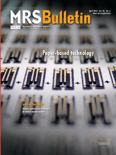
MRS BULLETIN
Scope & Guideline
Bridging Academia and Industry in Theoretical Chemistry.
Introduction
Aims and Scopes
- Advanced Materials Research:
The journal publishes articles on the properties, synthesis, and applications of new materials, including nanomaterials, biomaterials, and energy materials. - Materials Characterization Techniques:
A focus on innovative techniques for characterizing materials at various scales, from atomic to macroscopic, providing insights into their structure and performance. - Sustainable Materials Development:
Research on materials that contribute to sustainability, including recycling, renewable materials, and materials for clean energy technologies. - Interdisciplinary Approaches:
Encouraging collaborative research that integrates materials science with fields such as biology, engineering, physics, and chemistry. - Emerging Technologies:
Exploring cutting-edge technologies such as artificial intelligence, machine learning, and robotics in the context of materials research and development.
Trending and Emerging
- Bioinspired and Biomimetic Materials:
Research exploring materials inspired by biological systems is gaining traction, highlighting innovative applications in healthcare, robotics, and sustainable design. - Quantum Materials and Technologies:
An increasing focus on materials that exhibit quantum phenomena, including topological insulators and quantum dots, as researchers explore their applications in computing and sensing. - Artificial Intelligence and Machine Learning in Materials Science:
The integration of AI and machine learning approaches in materials discovery and design is rapidly growing, facilitating more efficient and innovative research methodologies. - Sustainable and Green Materials:
A strong trend towards the development of materials that promote sustainability, including energy-efficient, biodegradable, and recyclable options, reflecting global environmental concerns. - Flexible and Wearable Electronics:
Research on materials for flexible and wearable electronic devices is on the rise, driven by advancements in personal health monitoring and smart textile technologies.
Declining or Waning
- Traditional Materials Processing Techniques:
There has been a noticeable decrease in publications focusing on conventional materials processing methods, as research shifts towards advanced, automated, and sustainable processes. - Static Analysis of Materials:
Research focusing solely on static properties and behaviors of materials is waning, with a greater emphasis on dynamic and real-time assessments of material performance. - Single-Use Materials:
As sustainability becomes increasingly critical, topics related to single-use or non-recyclable materials are receiving less attention in favor of studies on biodegradable and reusable alternatives. - Basic Mechanical Properties:
While foundational studies are essential, there is a declining trend in papers that focus exclusively on basic mechanical properties without exploring their applications or implications in real-world scenarios.
Similar Journals
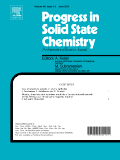
PROGRESS IN SOLID STATE CHEMISTRY
Connecting Theory and Practice in Materials SciencePROGRESS IN SOLID STATE CHEMISTRY, published by PERGAMON-ELSEVIER SCIENCE LTD, serves as a pivotal platform for disseminating cutting-edge research and advancements in the field of solid state chemistry. With an impressive impact factor and a respected status, this journal consistently ranks in the Q1 category across multiple disciplines, including Condensed Matter Physics, Materials Science, and Physical and Theoretical Chemistry. Following a rigorous peer-review process, it features articles that explore theoretical frameworks and experimental findings, thereby fostering innovation and collaboration among researchers and professionals. Although it does not adopt an open access model, its substantial reach and high Scopus rankings—19th in Condensed Matter Physics, 14th in Physical and Theoretical Chemistry, and 48th in General Materials Science—underscore its influence in shaping the future of materials research. Established in 1964, the journal continues to contribute significantly to the academic community, bridging the gap between theory and practical application in solid state materials.

Journal of Physics-Materials
Unveiling Breakthroughs in Condensed Matter PhysicsJournal of Physics-Materials, published by IOP Publishing Ltd, serves as a leading platform for disseminating groundbreaking research in the realms of Atomic and Molecular Physics, Condensed Matter Physics, and Materials Science. This Open Access journal, established in 2018, enables wide-reaching visibility and accessibility to high-impact studies, fostering international collaboration and innovation within the scientific community. With a remarkable Q1 ranking in prestigious categories and impressive Scopus rankings—positioned at #38 in Condensed Matter Physics and #29 in Atomic and Molecular Physics—this journal plays a pivotal role in shaping contemporary research and discussions in physics and materials science. Researchers, students, and professionals alike are encouraged to contribute to and engage with the rich knowledge base this journal offers, which is dedicated to advancing the frontier of materials research and its numerous applications.

MATERIALS SCIENCE-POLAND
Exploring the Depths of Material InnovationMATERIALS SCIENCE-POLAND, published by SCIENDO, is an esteemed open access journal dedicated to the rapidly evolving field of materials science. Since its inception in 2002 and transitioning to an open access model in 2015, the journal has been a vital platform for researchers and professionals to disseminate their findings and contribute to the scientific community. With an ISSN of 2083-134X and an E-ISSN of 2083-134X, it spans a comprehensive range of disciplines, focusing on condensed matter physics, materials science, and mechanical engineering among others. In the 2023 rankings, it holds a position in the Q4 and Q3 quartiles across various categories, showcasing its relevance and ongoing contribution to these fields. Researchers benefit from its accessibility, enabling wider reach and engagement with contemporary topics in material innovation and applications. As the journal continues to evolve until 2024, it remains a cornerstone for scholars looking to advance their knowledge and research in materials science.

REVIEWS ON ADVANCED MATERIALS SCIENCE
Transforming Research into Impactful KnowledgeREVIEWS ON ADVANCED MATERIALS SCIENCE, published by De Gruyter Poland SP Z O O, is a preeminent open-access journal dedicated to disseminating cutting-edge research in the fields of condensed matter physics, materials science, and nanoscience. Since its inception in 2003, the journal has established itself as a crucial platform for scholars and practitioners to share innovative insights and advancements, achieving a commendable Q2 ranking in its respective categories for 2023. With its headquarters in the Russian Federation, the journal is not only committed to expanding the frontiers of scientific knowledge but also emphasizes inclusivity through its open-access model, which has been in effect since 2019, enabling universal access to its high-quality content. With an impactful standing illustrated by its Scopus rankings—136th in Condensed Matter Physics and 186th in General Materials Science—REVIEWS ON ADVANCED MATERIALS SCIENCE stands as a vital resource for researchers, professionals, and students eager to engage with contemporary discussions and discoveries in materials science.
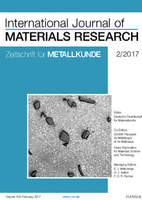
International Journal of Materials Research
Advancing the Frontiers of Materials ScienceInternational Journal of Materials Research is a prestigious academic platform specializing in the dissemination of cutting-edge research in the fields of materials science and condensed matter physics. Published by Walter de Gruyter GmbH, this journal serves as a vital resource for researchers, professionals, and students interested in the innovations shaping the materials landscape today. With an impact factor that reflects its growing influence, this journal offers an array of open access options, allowing for broad dissemination and accessibility of published findings. Spanning research from 1994 to 2024, the journal consistently ranks in the Q3 and Q4 quartiles across key subcategories, including materials chemistry, metals and alloys, and physical and theoretical chemistry. By bridging the gap between theoretical frameworks and practical applications, the International Journal of Materials Research provides an essential forum for advancing knowledge and fostering collaborations within the materials research community.

Frontiers of Materials Science
Empowering Researchers with Open Access to Materials ScienceFrontiers of Materials Science is a groundbreaking journal dedicated to exploring advanced materials and their applications within the ever-evolving landscape of materials science. Published by HIGHER EDUCATION PRESS, this journal offers a crucial platform for scholars and practitioners seeking to disseminate innovative research findings that foster interdisciplinary collaboration. Since its inception in 2011, the journal has enjoyed a notable Q2 ranking in the category of Materials Science (miscellaneous) as of 2023, positioning it among the noteworthy publications in the field with a Scopus rank of #222 out of 463. While predominantly published in China, the journal is committed to open access principles, allowing global accessibility to cutting-edge research. With its comprehensive coverage spanning materials synthesis, characterization, properties, and applications, Frontiers of Materials Science not only serves as a repository for academia but also bridges the gap between research and industry, making it an indispensable resource for researchers, professionals, and students alike.
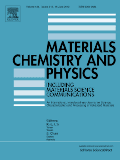
MATERIALS CHEMISTRY AND PHYSICS
Connecting Science and Innovation in Materials ResearchMATERIALS CHEMISTRY AND PHYSICS is a leading peer-reviewed journal published by Elsevier Science SA, focusing on the intersection of materials science and condensed matter physics. With an esteemed impact factor and a distinguished reputation in its field, this journal holds a Q1 ranking in Condensed Matter Physics and a Q2 ranking in miscellaneous Materials Science categories as of 2023. Spanning over three decades since its inception in 1983, it provides a vital platform for researchers, professionals, and students to disseminate cutting-edge findings and innovations in materials characterization, properties, and applications. The journal is indexed in Scopus, boasting impressive rankings that reflect its commitment to publishing high-quality research. Although it does not currently offer an Open Access option, it remains an essential resource for those seeking to stay at the forefront of materials chemistry and physics.

Materials Today Communications
Driving Innovation Through Open Access Materials CommunicationsMaterials Today Communications, published by ELSEVIER, stands as a prominent platform within the fields of Materials Chemistry, Materials Science, and Mechanics of Materials. With an open access format, this journal facilitates global dissemination of knowledge, aimed at enhancing collaboration and innovation among researchers, professionals, and students worldwide. Established in 2014 and converging through 2024, the journal has rapidly ascended through the ranks, achieving a commendable Q2 category status in multiple relevant categories. Specifically, its Scopus rankings highlight its influence, with rankings in the 64th to 69th percentile in various materials science domains. A key resource for those engaged in cutting-edge materials research, Materials Today Communications provides insightful coverage of contemporary advancements, bridging the gap between theoretical exploration and practical application.
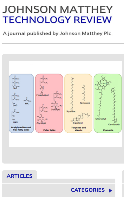
Johnson Matthey Technology Review
Leading the charge in electrochemical research and industry insights.Johnson Matthey Technology Review is a premier open access journal published by Johnson Matthey Publishing Ltd, dedicated to advancing research and innovation in the fields of Electrochemistry, Metals and Alloys, and Process Chemistry and Technology. Since its transition to open access in 2014, the journal has provided a platform for scholars and industry professionals to share their findings and insights in a rapidly evolving field. Based in the United Kingdom, this journal has garnered significant attention, achieving impressive rankings such as Q3 in Electrochemistry and Q2 in Metals and Alloys, reflecting its growing impact within the scientific community. With a commitment to promoting high-quality, peer-reviewed research, the Johnson Matthey Technology Review plays a vital role in connecting researchers, facilitating knowledge exchange, and fostering collaboration across disciplines, making it an essential resource for anyone involved in material science and chemical engineering.

Accounts of Materials Research
Exploring innovative pathways in materials research.Accounts of Materials Research is a premier journal published by the American Chemical Society, focusing on the multidimensional field of materials science. With a robust impact factor and a commitment to open-access research, it serves as a vital platform for leading-edge discoveries from 2020 to 2024. The journal has rapidly ascended to the top quartile in multiple categories, including Chemical Engineering, Materials Chemistry, and Polymers and Plastics, demonstrating its significant influence within the academic community. Recognized by Scopus as a key resource—with remarkable rankings that place it in the 95th percentile of its field—Accounts of Materials Research is devoted to publishing high-quality, innovative research that addresses critical challenges in materials development and implementation. This journal is essential for researchers, professionals, and students seeking to stay informed about the latest advancements and collaborative opportunities within the interdisciplinary landscape of materials science.